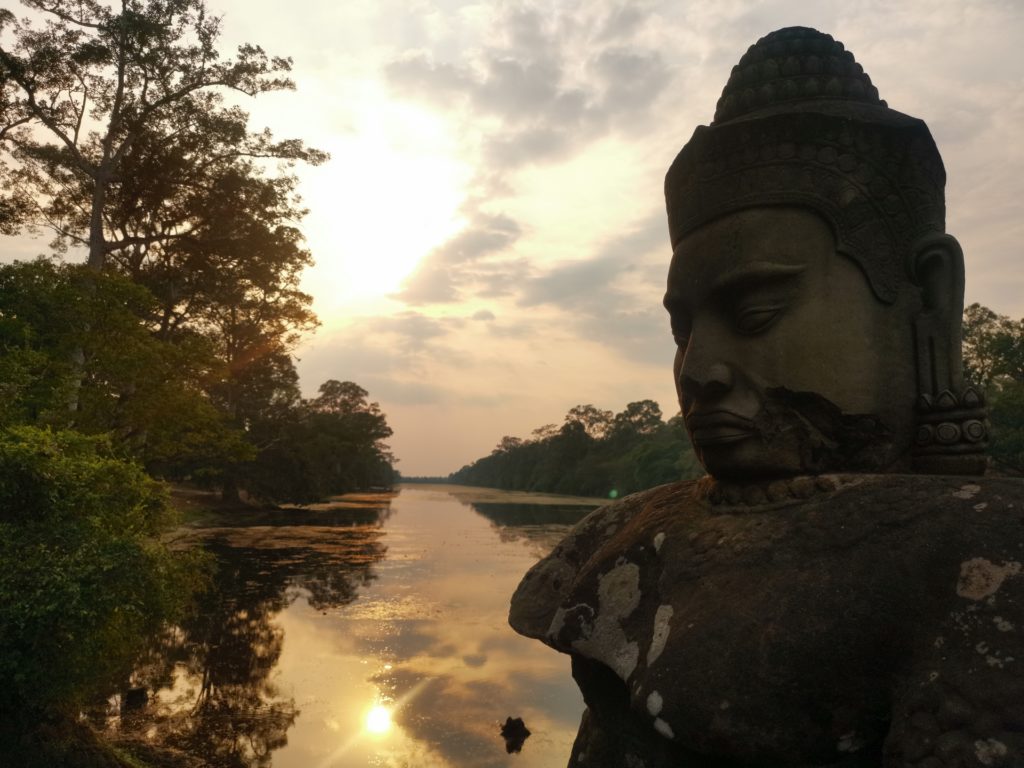Kutisvara – a very small temple complex
The temple ruins Kutisvara is a part of the world famous temple complexes of Angkor and is located in Siem Reap, between the monastery complex Banteay Kdei and the water reservoir Srah Srang. Interestingly, it is still not clear exactly when or under whose rule the temple was built. There are two theories, one pointing to King Jayavarman II, but the other to King Rajendravarman II . In terms of time, these views do not help us much to correctly classify the construction, since there are about 100 years between the reigns of the two kings. Thus, visitors must focus less on the historical facts than on the actual beauty of the temple ruins themselves.

Sunrise in the park of Angkor Wat
Surrounded by a few trees in the middle of rice fields on a small mound, the ruins of Kutisvara is not a classic destination for tourists traveling in the region. All the better: visitors can spend time here in peace, discovering the temple remains and taking in some of the flora and fauna that have reclaimed the area of the temple in recent centuries. Unfortunately, when we speak of a temple ruin here, it is not an exaggeration: the walls are in extremely poor condition and have never been seriously restored, which is a real pity considering what the temple must have once looked like in its glory days. Especially the central tower, which is designed in the style of Preah Ko, gives an idea of the complexity of the decorations and reliefs, which must have once covered the entire temple. At least it is still recognizable that the temple was a Hindu temple complex – for example, one can see a relief representation of the deity Brahma with his four heads carved in stone. The other two towers, which are located at the site, are designed in the Pre Rup style.
The ruins of Kutisvara were discovered during the French occupation in 1930 by French explorers, who had the vegetation cut back to reach the temple, but did not carry out any other restoration work.
All in all, it can be said that the ruins of Kutisvara are certainly an interesting destination for an excursion due to its location: the atmosphere around the rice fields situated in pure nature is certainly unique. From a historical or archaeological perspective, the temple is probably only moderately informative for visitors, since even the researchers have been able to find out very little about the actual purpose of the temple due to its poor general condition. However, anyone who is on a discovery tour in the area anyway should definitely include the temple.